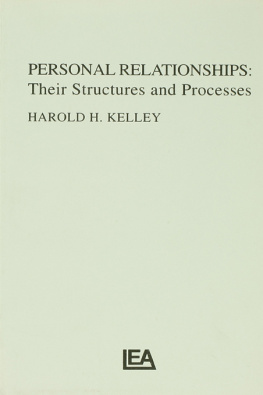First published 1982 by M.E. Sharpe
Reissued 2018 by Routledge
2 Park Square, Milton Park, Abingdon, Oxon OX14 4RN
711 Third Avenue, New York, NY 10017, USA
Routledge is an imprint of the Taylor & Francis Group, an informa business
Copyright 1982 by Hilda Scott
No part of this book may be reprinted or reproduced or utilised in any form or by any electronic, mechanical, or other means, now known or hereafter invented, including photocopying and recording, or in any information storage or retrieval system, without permission in writing from the publishers.
Notices
No responsibility is assumed by the publisher for any injury and/or damage to persons or property as a matter of products liability, negligence or otherwise, or from any use of operation of any methods, products, instructions or ideas contained in the material herein.
Practitioners and researchers must always rely on their own experience and knowledge in evaluating and using any information, methods, compounds, or experiments described herein. In using such information or methods they should be mindful of their own safety and the safety of others, including parties for whom they have a professional responsibility.
Product or corporate names may be trademarks or registered trademarks, and are used only for identification and explanation without intent to infringe.
Publishers Note
The publisher has gone to great lengths to ensure the quality of this reprint but points out that some imperfections in the original copies may be apparent.
Disclaimer
The publisher has made every effort to trace copyright holders and welcomes correspondence from those they have been unable to contact.
A Library of Congress record exists under LC control number: 81005239
ISBN 13: 978-1-138-03789-2 (hbk)
ISBN 13: 978-1-315-17762-5 (ebk)
The motion picture Kramer vs. Kramer, in which a young father sets out to prove that he has all the qualities of a good mother, and in the process relinquishes the high-pressure career that is just within his grasp, won five Oscars in 1980, It is hard to remember today that only ten years ago a suggestion that the respective parts played by men and women in society and personal life are (with the exception of childbearing) assigned somewhat arbitrarily by society and not by nature, still had some of the impact that Darwin's theory of the origin of species had had a century before. The possibility that the traits of personality and behavior designated as "feminine" and "masculine" were more the product of conditioning and cultural tradition than of genes or hormones was a subject to be introduced in mixed company at one's own risk.
The need for women in the labor force in the boom years of the 1960s and the widespread introduction of the birth-control pill were the chief determinants of a "sexual revolution" in the Western world whose theoretical premises were as yet undefined. Social scientists were studying women in the family, "role expectations," "role confusion," and "role conflicts," women's educational choices, and the socialization of children, but very few were questioning the roles they described. Male roles were largely ignored.
In the United States, still in the grip of the suburban ideal, sociologist Alice Rossi was in 1964 a lone voice arguing that since by far the majority of the "differences" between the sexes were socially determined, a new definition of sex equality was called for. She advanced "a socially androgynous conception of the roles of men and women":
Each sex will cultivate some of the characteristics usually associated with the other in traditional sex-role definitions. This means that tenderness and expressiveness should be cultivated in boys and socially approved in men ... that achievement need, workmanship and constructive aggression should be cultivated in girls and approved in women .... This definition of sex equality stresses the enlargement of the common ground on which men and women base their lives together by changing the social definitions of approved characteristics and behavior for both sexes.
Rossi deplored that there was "practically no feminist spark left among American women." She regretted what she saw as the excessive and unhealthy involvement of American women in homemaking and childrearing, their absorption with marriage, and she outlined the first institutional steps that could bring closer a more equal division of social roles between men and women: day care for preschool children, a change in the American pattern of suburban living, and changes in the school curriculum. While her view of the future did not then include an equal division of tasks in the home, she thought both men and women would come to agree "that unless a man can make room in his life for parenthood, he should not become a father."
When the "feminist spark" was litin fact, in the very year in which Rossi wrotewomen's energies at first were directed primarily at recognizing and describing their oppression. The 1963 report of the President's Commission on the Status of Women, while recommending the removal of barriers to women's full participation in the life of society, assumed that women would continue to bear the main responsibility for children and the home. The inclusion of women under Title VII of the Civil Rights Act in 1964 occurred almost by accident, and was seen by most congressmen as a joke.As late as 1972, "sex roles" rated only five entries in the index of U.S. literature in the social sciences; by 1975 this number had expanded to 56.
It was in the latter year that the first major statement forwarding a practical program for a more equal division of roles ap Its recommendations called for
-affirmative action plans by employers;
-enforcement of equal opportunity legislation;
more militancy by trade unions;
the elimination of sex-role stereotypes in education;
universally available high-quality day care;
the use of government social-security, income-tax, welfare, and training programs to equalize the position of women and men.
By the time this document appeared, the concept of sex-role equality had already acquired a certain international respectability through its incorporation in a United Nations document. This was the report of the World Conference of the International Women's Year, held in Mexico City from June 19 to July 5, 1975. Point 16 of the Plan of Action reads:
The achievement of equality between men and women implies that they should have equal rights, opportunities and responsibilities to enable them to develop their talents and capabilities for their own personal fulfillment and the benefit of society. To that end, a reassessment of the functions and roles traditionally allotted to each sex within the family and the community at large is essential. The necessity of a change in the traditional role of men as well as women must be recognized.
If so diverse a group as the delegates to the IWY conference in Mexico City could agree to such a statement of principles (in preference to the more conservative amendments offered by the Soviet Union and Japan, which called for conditions to enable women to combine their duties in the home with activities outside it), this was at least in part because of the arguments and concrete experience of Scandinavian delegates, who were able to point to already functioning government programs and legislation aimed at changing the daily lives of both women and men. It is this legislation, these programs, and this experience, as they were shaped in Sweden specifically, that I will examine in the following chapters.











